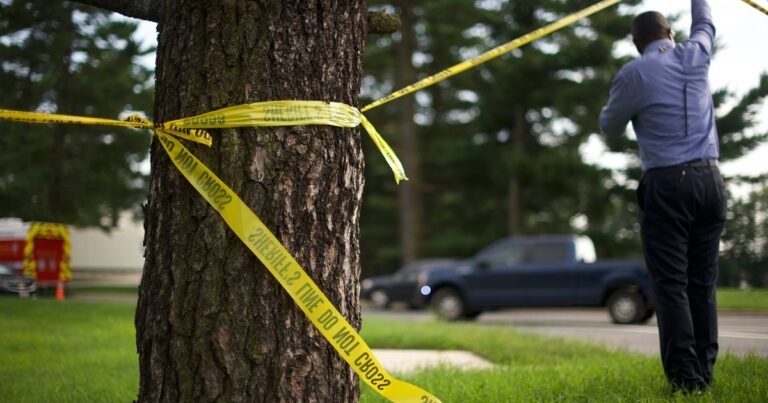In a recent advisory, U.S. Surgeon General Vivek H. Murthy declared that gun violence in America is a public health crisis that requires immediate national recognition and action.
According to the recommendations, firearm-related injuries will become the leading cause of death among children and adolescents in the United States after 2020, surpassing motor vehicle accidents, cancer, and drug overdoses and poisonings. In 2022, a total of 48,204 people will die from firearm-related injuries, including suicides, homicides, and unintentional deaths.
The recommendations on gun violence cite the work of several Northwestern professors, and Northwestern Now spoke with three of them about the impact of gun violence and potential solutions.
Community Violence Intervention
“This report is another wake-up call for solutions to address the enormous toll that gun violence continues to take on Americans every year,” said Andrew Papachristos, whose research on secondary traumatic stress among Chicago community violence interventionists was cited in the recommendations. “Our research shows the way forward, and it starts with investing in street outreach workers who use their lived experiences of gun violence to help break the cycle of violence.”
“These unarmed workers engage in Community Violence Intervention (CVI) programs in areas with the highest levels of violence. One CVI program in Chicago has seen a double-digit reduction in violence-related arrests. Participants stop carrying guns, fighting, robberies and shootings, calming communities and saving lives.”
But high levels of trauma and violence in the workplace put a “huge strain” on outreach workers, Papachristos said.
“One of our studies found that more of them (12%) were shot in the line of duty than police officers (1%). Another study found that 94% of outreach workers reported signs of secondary traumatic stress. Therefore, to stop this public health crisis, we must care for and invest in these essential frontline workers and build a community-focused violence prevention infrastructure that supports them.”
Papachristos is also director of the Institute for Policy Studies, the John G. Searle Professor of Sociology, and director of the Center for Neighborhood Engagement Research and Science.
Safe Firearm Storage
“There are methods that work, and we need to implement them and study them,” said Rinad Beidas, whose research on the long-term effects of exposure to firearm injuries among young people was cited in the recommendation. The report calls for implementation studies to improve the effectiveness of prevention strategies.
“This is an apolitical, relatively inexpensive and scalable approach to saving lives,” said Beidas, who has published research on implementing safe firearm storage programs through pediatric physician visits and has received funding to conduct larger-scale trials of the program.
Beidas is chair of the Department of Medical Social Sciences at the Feinberg School of Medicine and the Ralph Thiel Puffenbarger Professor of Medical Social Science Implementation.
We have something that works, we just need to implement it and study it.”
Addressing complex issues
“The nation’s youth and young adults are disproportionately affected by gun deaths and non-fatal gun injuries that occur every day, but our study found that the rate of firearm deaths among youth previously involved in the juvenile justice system is up to 23 times higher than the general population,” said Linda Teplin, whose research on crime victimization of adults with serious mental illness was cited in the recommendation.
Teplin is Feinberg’s vice chair for research and the Owen L. Kuhn Professor of Psychiatry and Behavioral Sciences, and principal investigator of the Northwestern Juvenile Project, the first large-scale longitudinal study of the mental health needs and outcomes of delinquent juveniles after incarceration.
“Reducing gun violence requires creative, interdisciplinary approaches that engage legal and medical professionals, street outreach workers and public health researchers. People who have been shot are more likely to be injured or killed again, which is why hospital emergency departments are ideal places to deliver violence prevention interventions. Poverty also breeds violence. We need to address the compounding issues that lead to urban blight, such as lack of housing, unemployment and poor infrastructure.”
“The public is extremely concerned about mass shootings, but they account for less than 4% of all gun deaths. We need to focus on the other 96% of everyday violence that disproportionately affects poor people, urban young people, and especially people of color.”


